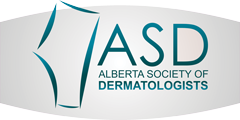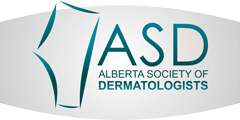Melanoma: Causes and Treatments
Melanoma is a type of skin cancer that affects melanocytes, the cells that produce the skin pigment melanin. Moles form when melanocytes are grouped in clusters. Although these lesions are usually benign, malignant melanoma may develop in these locations in susceptible individuals, particularly with exposure to factors such as excessive sun exposure. Melanoma is known for its aggressive growth and tendency to metastasize to other areas of the body, but modern treatments have improved recovery rates dramatically. Patients should regularly examine their skin for new moles or changes to existing moles and visit their dermatologist if they see anything unusual.
Causes of Melanoma
Among causes of melanoma, sunlight exposure has been established as the strongest risk factor despite a lack of clarity regarding which wavelengths are most responsible. Although some individuals develop melanoma without having any apparent risk factors, researchers have identified a number of factors that can make people more prone to melanoma. These include:
Dysplastic moles: Also called nevi, at least a few of these are present on most people. However, having many dysplastic moles is known to raise the risk of melanoma. Individuals whose family history includes both dysplastic moles and melanoma have the highest melanoma risk.
More than 50 moles: Melanoma risk is increased in people who have a very large number of moles.
Fair skin: People who have fair skin are more likely to have freckles and become sunburned from sun exposure compared to dark-skinned individuals. Caucasians, particularly those with blue eyes and blond or red hair, are more likely to develop melanoma compared to black people for this reason.
Melanoma in family history: Individuals whose family history includes melanoma are more likely to develop it themselves. When patients have family members with melanoma, they should visit a doctor regularly to watch for signs of the disease.
Immune suppression: Individuals with reduced immune function because of cancer, HIV or immunosuppressive drugs are more likely to develop melanoma.
Very severe sunburns: Even a single blistering sunburn during childhood or adolescence raises the risk of melanoma later. This is why doctors recommend protection of children from heavy sun exposure. However, sunburns during adulthood also increase the likelihood of developing the disease.
UV radiation exposure: Researchers have repeatedly linked extensive sun exposure to melanoma risk. In fact, melanoma is more common in the sunny southern United States compared to the cloudier northern states. Exposure to tanning beds and sun lamps can also damage skin and increase melanoma risk. For this reason, both sun exposure and use of artificial UV sources should be limited.
Types of Melanoma
Melanoma can present in a variety of forms classified according to location, growth pattern and prognosis. The four types to remember are:
Superficial Spreading Melanoma: Two-thirds of melanoma cases are of this type. In most cases, this is characterized by either mutations of existing moles or black or dark brown flat areas of discoloration on the skin.
Nodular Melanoma: These melanomas normally appear independently of existing moles. Often appearing in the form of a smooth blue-black bump, known as a nodule or papule, this type is known for its fast growth and more frequent metastasis to lymph nodes.
Acral-Lentiginous Melanoma: Often appearing on the soles of the feet, palms of the hands or skin beneath the nails, this type develops rapidly. This is the most common type of melanoma among people with darker skin. Moles rarely appear on the feet or hands, so an exam should be performed for any mole in these locations.
Lentigo Maligna Melanoma: This type is usually seen on areas of skin damaged by sun exposure, such as the faces of older patients.
Melanoma Treatments
With timely treatment, melanoma can often be cured successfully. This is particularly true when melanoma has not yet spread. A variety of factors can affect which melanoma treatment is recommended, including the location on the body, the cancer stage, the cancer thickness and overall health. The following treatments may be recommended for melanoma:
Surgery: This is the standard option for treating melanoma that has not yet spread. Depending on the level of risk associated with a particular case of melanoma, recommendations for chemotherapy, radiation or other treatments may be given afterwards.
Chemotherapy: This is a systemic treatment that addresses cancer throughout the body and may be recommended after melanoma has metastasized.
Radiation therapy: Useful for certain types of melanoma, radiation targets melanoma cells that may be present in areas already treated by surgery.
Biological therapy: Also called immunotherapy, this is often used for patients whose melanoma has metastasized to nearby lymph nodes or who have higher risks of recurrence. Biological therapy works by stimulating the entire immune system. For some tumors, specific immunotherapy may be used to directly address the cancer. Interferon alpha, used in high doses, is the most common drug used in biological therapy.
Melanoma becomes more dangerous after it has spread throughout the body. This fact highlights the importance of checking moles regularly and scheduling exams to have suspicious spots assessed. By taking these precautions, patients are more likely to have the disease caught early so that treatment can proceed for a higher chance of recovery.

